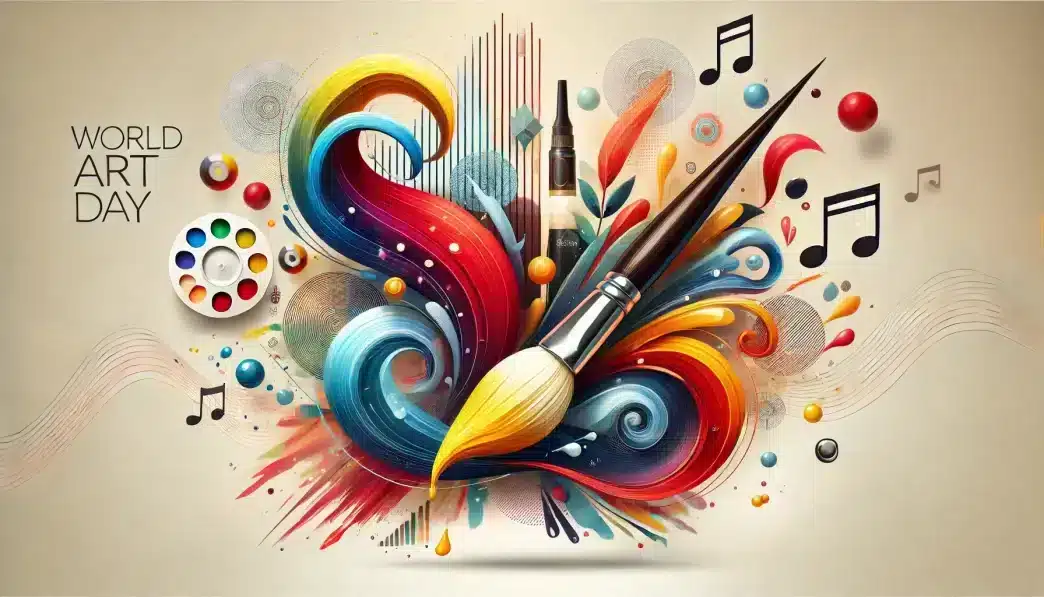What is World Art Day?
World Art Day is celebrated annually on April 15 to promote the development, diffusion, and enjoyment of art. Proclaimed by UNESCO during its 40th General Conference in 2019, the day highlights the importance of art in fostering creativity, cultural diversity, and knowledge sharing across societies. It serves as a global reminder of how art enriches human experience and strengthens connections between cultures.
The date was chosen to honor Leonardo da Vinci’s birthday, recognizing his contributions as a painter, scientist, and visionary. His work symbolizes the blend of art and science, freedom of expression, and the universal nature of creativity.
History and Origin
The idea for World Art Day originated at the 17th General Assembly of the International Association of Art (IAA), held in Guadalajara, Mexico. The first official celebration took place on April 15, 2012, and has since grown into a worldwide event endorsed by UNESCO in 2019.
Leonardo da Vinci was selected as the inspiration for this day due to his impact on art, science, and human knowledge. His works, including the Mona Lisa and The Last Supper, continue to inspire artists across generations. Today, World Art Day is celebrated globally through exhibitions, workshops, public art displays, and educational initiatives.
Who Observes World Art Day?
- Artists and cultural institutions – Museums, galleries, and cultural centers organize events and exhibitions.
- Educational institutions – Schools and universities host art workshops and discussions on the value of art education.
- Communities and individuals – Art lovers participate in creative activities and share artwork.
- Governments and UNESCO partners – Organizations advocate for policies supporting artistic freedom and expression.
- Online and social media communities – Digital artists and influencers engage audiences with virtual art events.
Slogans and Themes
World Art Day highlights artistic expression, cultural diversity, and the role of art in shaping societies. Common slogans include “Art Unites Us,” “Celebrate Creativity,” and “Art for All.”
Colors, Symbols, and Patterns
Colors
- Palette spectrum represents the diversity of artistic expression.
- Gold symbolizes the value and historical importance of art.
- Blue reflects inspiration, imagination, and creativity.
Symbols
- Palette and brushes signify the tools of painters and creators.
- Leonardo da Vinci’s Vitruvian Man symbolizes the harmony between art and science.
- Sculpture and theater masks represent the various disciplines of artistic expression.
Patterns
- Abstract designs reflect creativity and open interpretation.
- Cultural motifs incorporate artistic traditions from around the world.
- Geometric patterns highlight structure and balance in art.
How to Observe World Art Day
- Visit an art exhibition at a local gallery or museum.
- Create and share artwork through painting, drawing, sculpture, or digital media.
- Participate in an art workshop to explore different techniques and styles.
- Support artists by purchasing artwork or promoting their work.
- Use social media to share favorite art pieces and discuss the role of art in society.
Most Used Hashtags
- #WorldArtDay
- #ArtUnitesUs
- #CelebrateCreativity
- #ArtForAll
- #LeonardoDaVinci
Why is World Art Day Important?
World Art Day emphasizes the power of art in shaping cultures, preserving heritage, and inspiring innovation. Art provides a medium for self-expression, education, and emotional connection, bridging differences across societies. By celebrating this day, people reaffirm the role of creativity in fostering peace, tolerance, and understanding worldwide.
Art has long been a reflection of history, identity, and personal experience. Through exhibitions, performances, and public initiatives, World Art Day ensures that art remains accessible and valued as a cornerstone of human development.
Features
- Arts Literature and Music
